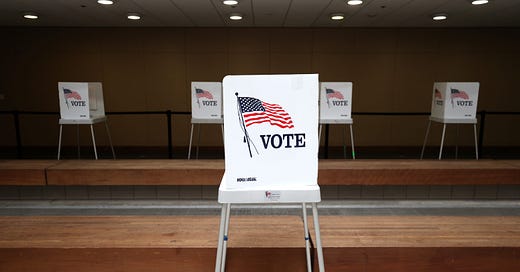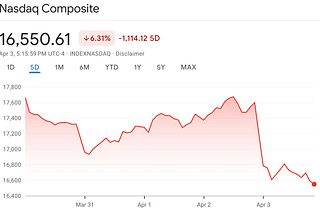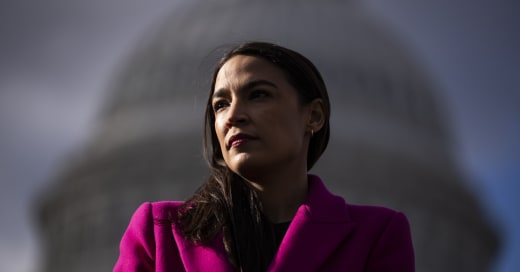
Ticket-Splitting Voters Are Disappearing—Which Makes Them Even More Valuable
You win elections by winning the margins.
On November 4, 2020, Rep. Collin Peterson—the maverick, conservative Democrat from western Minnesota—was nowhere to be found for a post-election interview. In and of itself, this wasn’t unusual, Peterson has never been overly friendly with the media. He has run his campaigns his own way, by attending hundreds of local events and gatherings across the district. For 30 years, this approach had worked like a charm, as Peterson kept winning in a district that kept shifting further and farther to the right. In 2016 he won his race by 5 points even as Hillary Clinton lost the district by 31 points.
But Peterson did release a post-election statement. Gone was the traditional victory lap he would take every two years and in its place was simple thank-you to the members of the district for the memories, along with a lament regarding the outside money poured into his election and the ruby-red presidential lean of the district becoming “too much to overcome,” at long last.
For the first time in 30 years, Collin Peterson had lost.
Partisan polarization is at an all-time high. As both parties drift further apart ideologically, it has rapidly become the single best predictor of how Americans stand on many issues. A recent Pew Research Center study polled stances on 30 diverse ideological issues and showed the average partisan gap was 39 points. For comparison, the average racial gap was 17 points and the average gender gap was 6 points.
As this partisan issue gap widens, the number of Americans willing to cross party lines and vote for different parties on the same ballot (e.g. a Republican for Congress and a Democrat for president) declines because they find the other party increasingly inhospitable to views that they hold deeply important.
Statistical modeling done by Split Ticket shows that in 1980, only 40 percent of a district’s congressional vote could be attributed to how it voted presidentially. By 2008 this had increased to 70 percent and by 2020, a staggering 97 percent of an average district’s congressional vote could be explained by its presidential lean. As the parties began to diverge ideologically, factors like candidate quality began to matter less and less. The ideological gap—and hence the partisan gap—became far too large to bridge.
Even once-prized factors such as incumbency, which helped congressmen such as Chet Edwards and Frank Wolf hold onto to difficult seats for years, have grown much less important as of late. For example, FairVote estimated that incumbent congresspersons received a 7.7 point boost in expected vote in the 2000 election cycle. But in the 2020 cycle, Split Ticket’s estimates found that incumbency was worth only around 1.7 points of vote share (or roughly 3.5 points in two-way margin). The district’s presidential vote was increasingly the determining factor.
The number of competitive districts has been declining over time as well, as shown by Nate Silver’s analysis: In 1992, there were 105 “swing districts” that were within 5 points of the national popular vote margin. By 2000, there were 61, and by 2012, there were only 35. This, as Silver points out, generally only serves to increase partisan rancor and further entrenches ideological polarization; as the number of representatives in swing districts dwindles, the incentive to compromise in legislation generally declines as well.
It should then be of little surprise then that with fewer swing voters and districts “up for grabs,” campaigns fight tooth and nail to gain any advantage that they can. Virtually every serious candidate tries to appeal to swing and marginal voters via a flurry of advertising and paid media appearances. This does help achieve some degree of crossover support; Split Ticket estimates found that roughly $1 million in spending corresponded to about 1 point in two-way margin nationally in the 2020 House elections. The ability of candidates to get on TV and sell their message still matters, at least a little. Even with this, though, there is increasing evidence that spending matters more in primary elections than in general elections, because the gap between ideologies in the former is minimal compared to what it is in the latter.
So how does a candidate get to the maximum crossover vote? What helps them beat the baselines one might expect from an area’s presidential lean, outside of incumbency and media spending?
The answer differs depending on both the district and member in question. Most of the time, incumbents are able to establish unique political brands that connect with the voters in their districts. Oftentimes, separating from the platform tenets of the national party attracts just the right amount of swing voters.
Three Republican candidates with exceptional overperformances were Young Kim (CA-39), Brian Fitzpatrick (PA-01), and David Valadao (CA-21). Kim and Fitzpatrick both won Democratic-leaning suburban districts that are more Republican down ballot. In Kim’s case, a combination of moderate messaging, solid fundraising, and her Korean-American heritage boosted the GOP floor significantly in diverse Orange County—the most populated part of the district. Fitzpatrick, who succeeded his brother in Congress, has accrued a moderate voting record with a soft spot for organized labor. That brand has allowed him to appeal to both wealthy Democratic-trending towns in central Bucks County and to working class areas further south along the Delaware River.
The heavily-Hispanic San Joaquin Valley-based CA-21 is completely different from CA-39 and PA-01, but its congressman’s path to success has a lot in common with the ones taken by both Kim and Fitzpatrick. For starters, David Valadao represented his seat for six years before his upset loss in 2018. That Congressional experience gave him political connections key to successful fundraising, while boosting his name recognition and his bond with the Hispanic community. Like Kim’s strength with Asian-Americans, Valadao’s exceptionally good numbers with Hispanics helped him achieve significant crossover vote and carried him to victory in a district that Joe Biden won by double digits.
Democratic candidates with similarly impressive finishes were Jared Golden (ME-02), Ben McAdams (UT-04), and Collin Peterson (MN-07). On paper, few would expect the second most rural district in the country to be represented by a Democrat today. But Jared Golden, a youthful Marine Corps veteran who won his seat in 2018 as a result of Maine’s Ranked Choice Voting system, is the perfect policy fit for ME-02. Moderate to conservative on important issues such as gun rights, Golden’s brand is handcrafted to appeal to a volatile constituency. His 2020 reelection was just as comfortable as Trump’s win in the Pine Tree State’s northernmost half, which clearly demonstrated his regional durability.
Ben McAdams was the incumbent in UT-04, which runs from Democratic Salt Lake City to blood red Utah County. He lost his 2020 reelection, but he still wildly overperformed Biden: McAdams lost the district by 1 point; Biden lost it by 9 points.
And then there’s Collin Peterson, who we talked about at the beginning. He had been chairman of the Agriculture Committee and was ostensibly conservative on most important policy stands—one of only two Democrats to vote against both articles of Trump’s first impeachment. And even in defeat, he received 6 percent more of the vote than Biden in his rural, heavily-Republican district. (Had a third-party Legal Weed Now candidate not been in the race, Peterson likely would have done even better.)
The days of conservative Democrats from rural Tennessee and liberal Republicans from Silicon Valley are all but gone. The single best predictor of how a district will vote for a House race is now its presidential result, and if the trends of the past 30 years continue, this relationship will grow stronger, which will further decrease the importance of candidate quality, incumbency, and media spending.
For now, there still exists room for candidates who work hard at it to establish a strong, independent brand that lets them achieve significant crossover support. The question is just how long they can hang on.
Correction January 25, 2022, 11:33 a.m.: The article originally stated that Joe Biden lost Ben McAdams's district by 19 points. Biden lost the district by 9 points. The text has been corrected accordingly.










